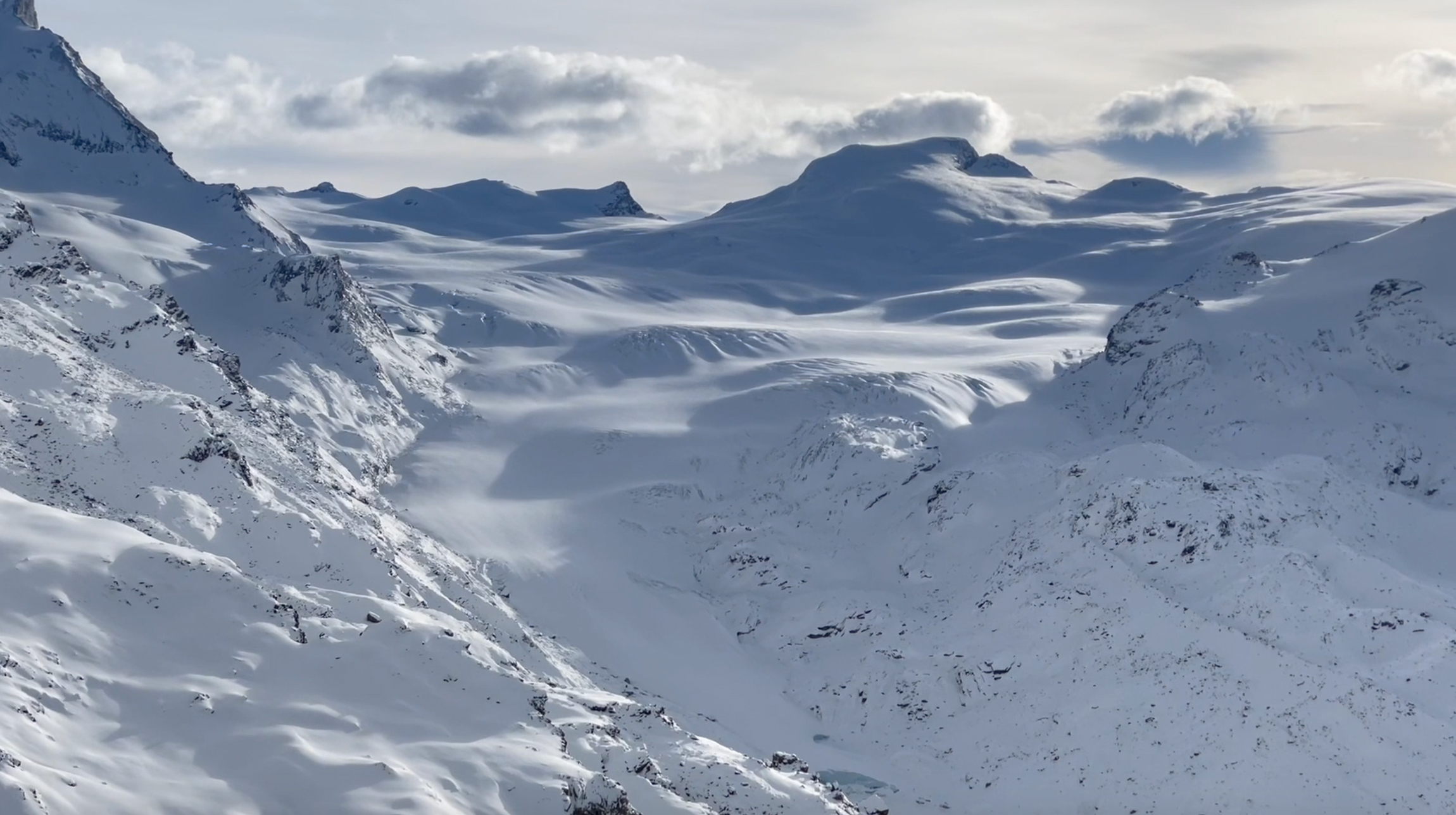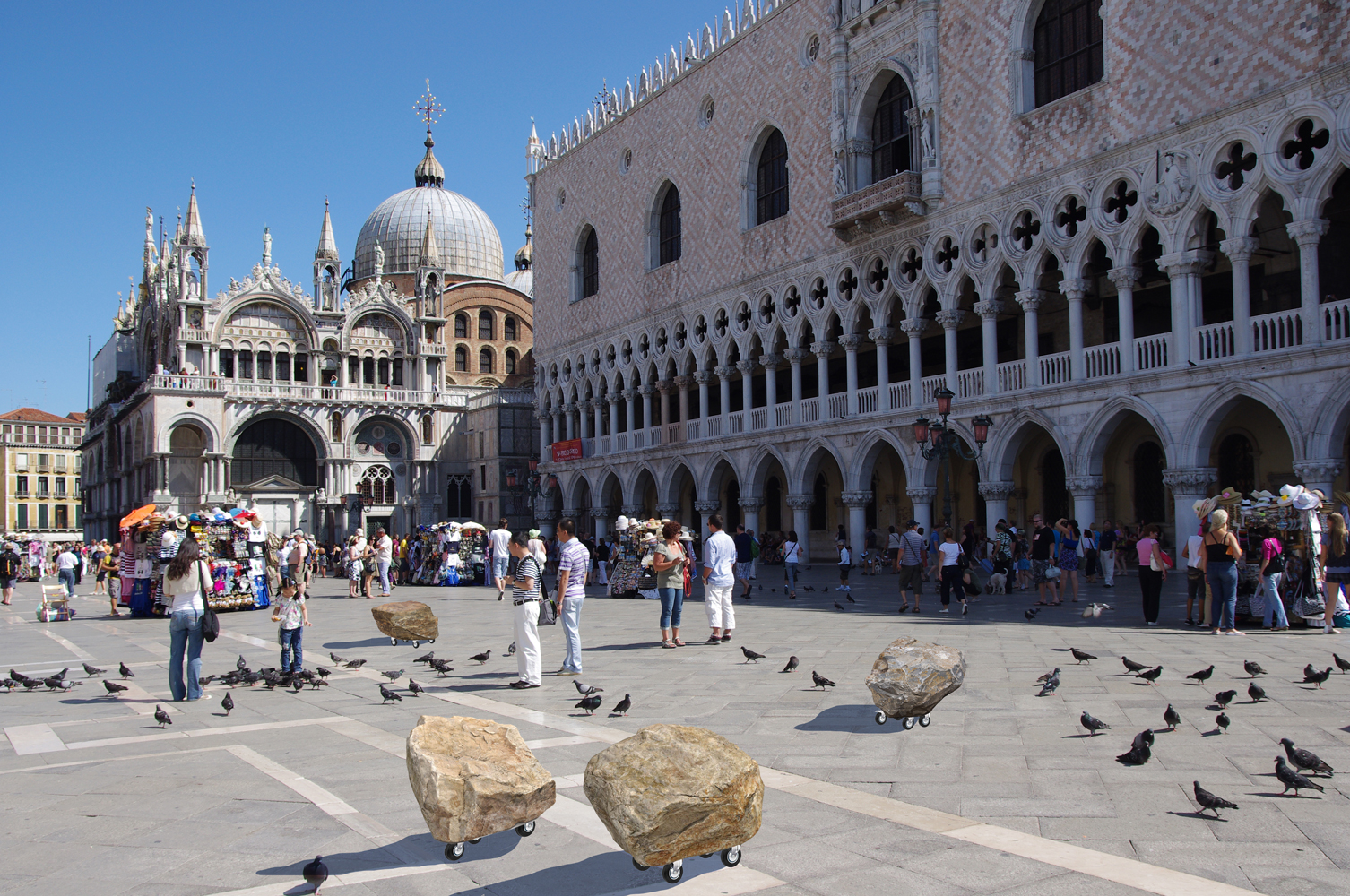
Vogt Landscape Architects and the ETH Chair of Günther Vogt exhibit at the 17th International Architecture Exhibition - La Biennale di Venezia curated by Hashim Sarkis. The projects will be presented from May 22nd to November 21st 2021.
Migrating Landscapes, Rolling Stones and Common Water - the Alps. Based on the theme “How will we live together?” proposed by architect and scholar Hashim Sarkis, the three contributions by Vogt Landscape Architects and the Chair of Günther Vogt at ETH Zurich focus on the elements, stone, vegetation and water. The installations raise the issue of accelerated transformation processes of today’s landscapes as a result of the changing environmental conditions and address the question, what these changes mean for the coexistence of societies.
Migrating Landscapes
The mega-structure found inside the garden works as a model of the city on which it stands – a topography made of architecture. The hard-pressed bricks that make up this urban landscape are made of soil derived from different regions across Europe, offering a sort of architectural material mapping of a region whose flora, like that of the world, is constantly changing. As the vegetation grows between the cracks of this city model, architecture is transformed into landscape.
This landform extends under the shadows of five trees, representing one of the most important vegetation and landscape elements of public space across the continent: Platanus acerifolia. Placed at the centre of the installation, this magnificent deciduous tree signifies the beginning of the garden under Napoleonic rule as well as the introduction of non-native flora into the city‘s green spaces.
The installation not only maps the territory through a deconstruction of its architecture, but also acts as a timeline of the changes in vegetation undergone by the city of Venice. These are made visible in the form of a faded planting scheme of non-native flora introduced to the city. The project presents a synthetic history of ecological change and manipulation of land.
The urban landscape gives way to a rugged topography accommodating the seeds of change, giving way to a new type of landscape that re-imagines the implicit relationship between landscape and architecture.
Rolling Stones
The non-human realm entails a large array of elements which tend to be classified as inert, but there are a number of these that are intrinsically associated to landscape and the natural world-a domain characterized by abundance and most importantly life. Yet landscapes are a collection of both biotic and abiotic elements, which through human perception transform it into a cultural object. If this is true, then the agency that we could ever give to rocks, in this case, can be animated through popular culture and the almost imperceptible movement carried out by boulders through millions of years and recurring ice ages, visible through a song.
„Rolling Stones“ does not recognize the agency of these rocks through their value as entities, but rather acknowledges them through association, metaphor and their ability to come to life, not just through movement, and their undoubted capacity to shape the land and our conceptions of landscape, but through language- through words.
Common Water – the Alps
The Alps are not a static assemblage but a dynamic and sensitive living space. Geological and geomorphological processes formed their characteristic topography over millions of years and in so doing established the fundamental conditions for the development of Alpine culture. This is characterised by the continuous creation of livable conditions, directly engaging with local conditions which in turn develop specific forms of community to secure a sustainable way of handling natural resources.
At the same time, the Alps are not a sealed off space, but have always been integrated into the economic and social developments of the European continent, albeit usually delayed and in a milder form. With industrialisation came the distinction between intensively and extensively used landscapes. Climate change fuels these developments further. When considering water as a central resource of the Alpine landscape, the consequences of the rising temperature become clear to see. The rapidly progressing melting of the glaciers and the declining significance of the snow entail amongst other things a «liquefaction of the water balance»; i.e. the storage function of snow and ice becomes less important, so that the hydrological conditions are more strongly influenced by precipitation. The result is that the Alps can no longer completely fulfil their function as Europe’s water tower, particularly in summer. They will however continue to be of outstanding importance in the Central European water supply. The adjacent lowlands of the Alps also become drier in summer.
In order to explore the possibilities of how to deal with water in the Alps from now on, a broad discourse is necessary. This contribution to the exhibition puts forward a proposal for a new reading of the Alpine landscape as an «ecological island» at the centre of the continent, integrating various disciplines such as art, natural sciences, engineering and landscape architecture. Seen in a European frame of reference, totally new features arise: a resource space for (immaculate quality) water and energy; a hotspot of biodiversity; a tourist destination with pleasant climatic conditions; a cultural space free from the stress of dense populations, and a unique landscape.
The installation of new relationships between inner-Alpine and outer-Alpine Europe is founded on the principles of collaboration. As in the case of the early agricultural communities in the Alpine region, the exchange will have to be based on a jointly negotiated and sustainable use. In this way a responsible and careful way of dealing with the resource of the Alpine landscape is possible, refraining from traditional images and ideas but rather creating new images and meanings.
Preorder the Publication "Moving Borders – Changing Alpine Landscapes“ that documents the contributions at the Biennale and completes them with scientific essays, artistic works and comprehensive photographs and maps taken during field trips to the Alps.
To be published by Lars Müller Publishers in October 2021: www.lars-mueller-publishers.com/moving-borders







